Hi everyone and happy new year! With the holiday season, we didn’t provide an update in a blog post in December. But don’t worry, we were hard at work on the 2022.4 release and there’s lots to share this month on progress.
Task Capture moves ahead
Export to Studio enhancements
2022 starts with exciting announcements from the UiPath Task Capture team. We’ve been working on updating the recorder and enabling extensions support to improve the quality of selectors. Now, you can choose selector quality mode for generating a .XAML file for export to UiPath Studio or StudioX. You can leverage three predefined modes or configure selector precision according to your needs with the custom one.
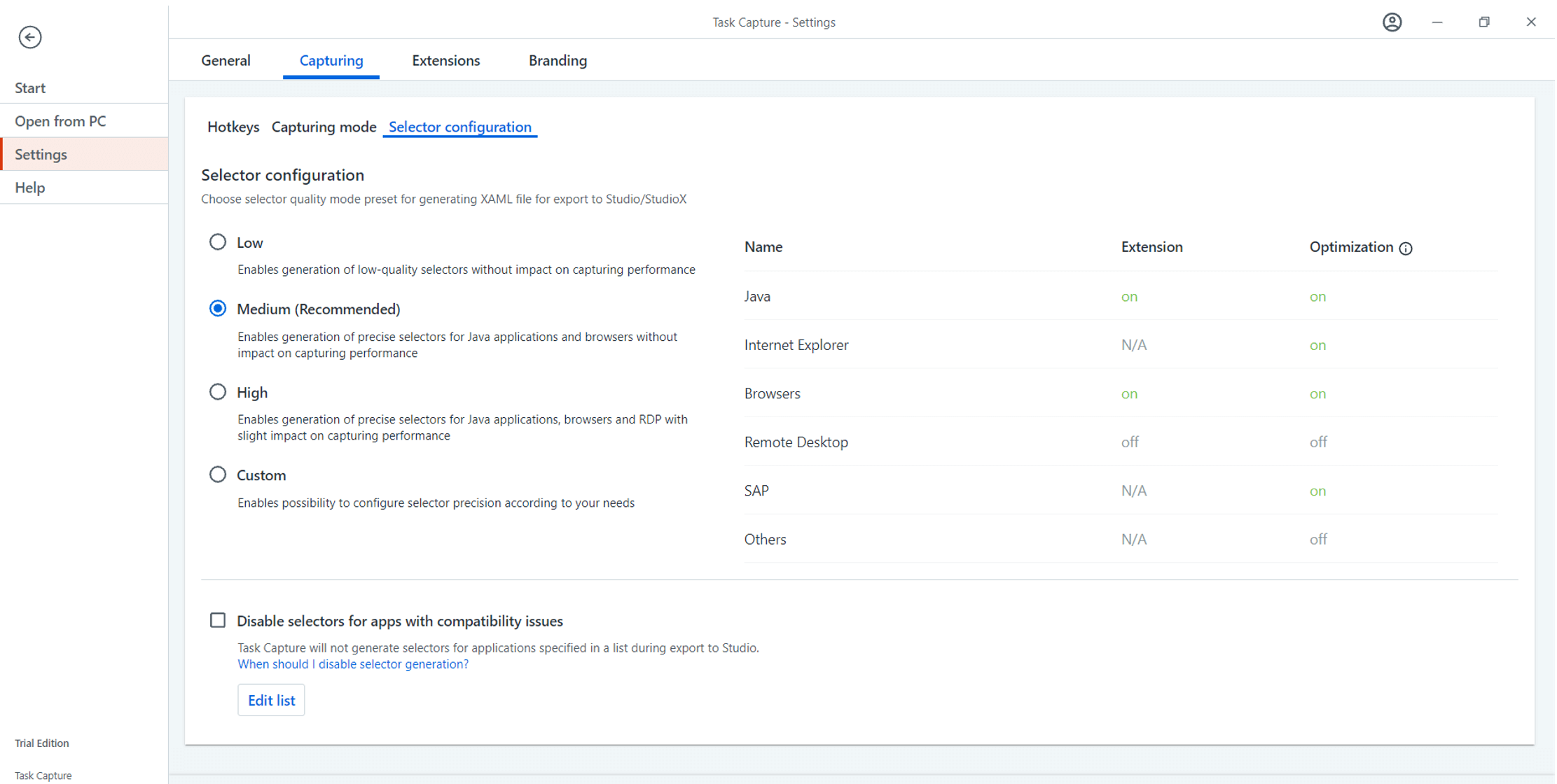
One more focus area was export enhancements. When exporting to Studio, you’re now able to choose the type of activities—classic or modern. In addition to this, we’ve improved personal identifiable information (PII) data masking in Studio and StudioX export.
Export to StudioX
We’re excited to share that Task Capture now allows you to generate .XAML files compatible with StudioX. Citizen developers can use Task Capture flows as a starting point, increasing development speed and usability. This will help center of excellence (CoE) leads accelerate their citizen development programs, ensuring that anyone can be empowered to take on frontline automation opportunities for themselves or teammates.
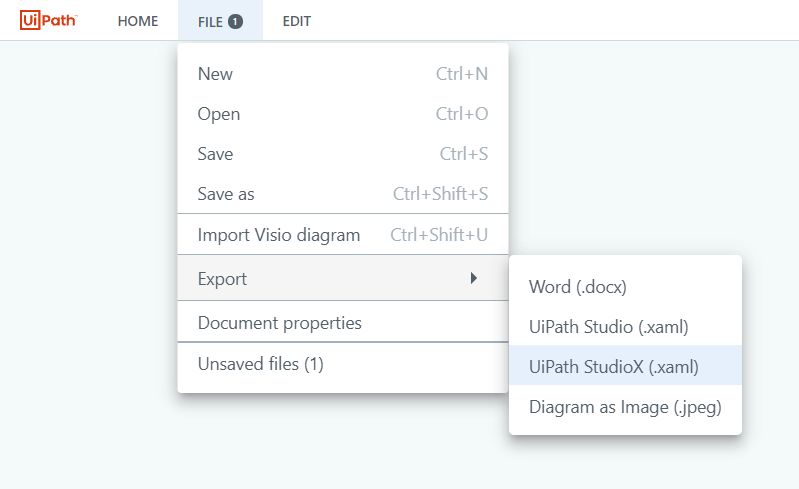
BPMN elements support
This month, the Task Capture team introduced BPMN elements support, allowing our customers to build more comprehensive and detailed process maps according to business standards. For that, we used the existing supported elements and allowed users to change their type to BPMN-compatible format. We also introduced a possibility to add intermediate events as well as change icons on the elements to make your process maps even easier to scan visually. Follow our monthly announcements for more updates on this topic.
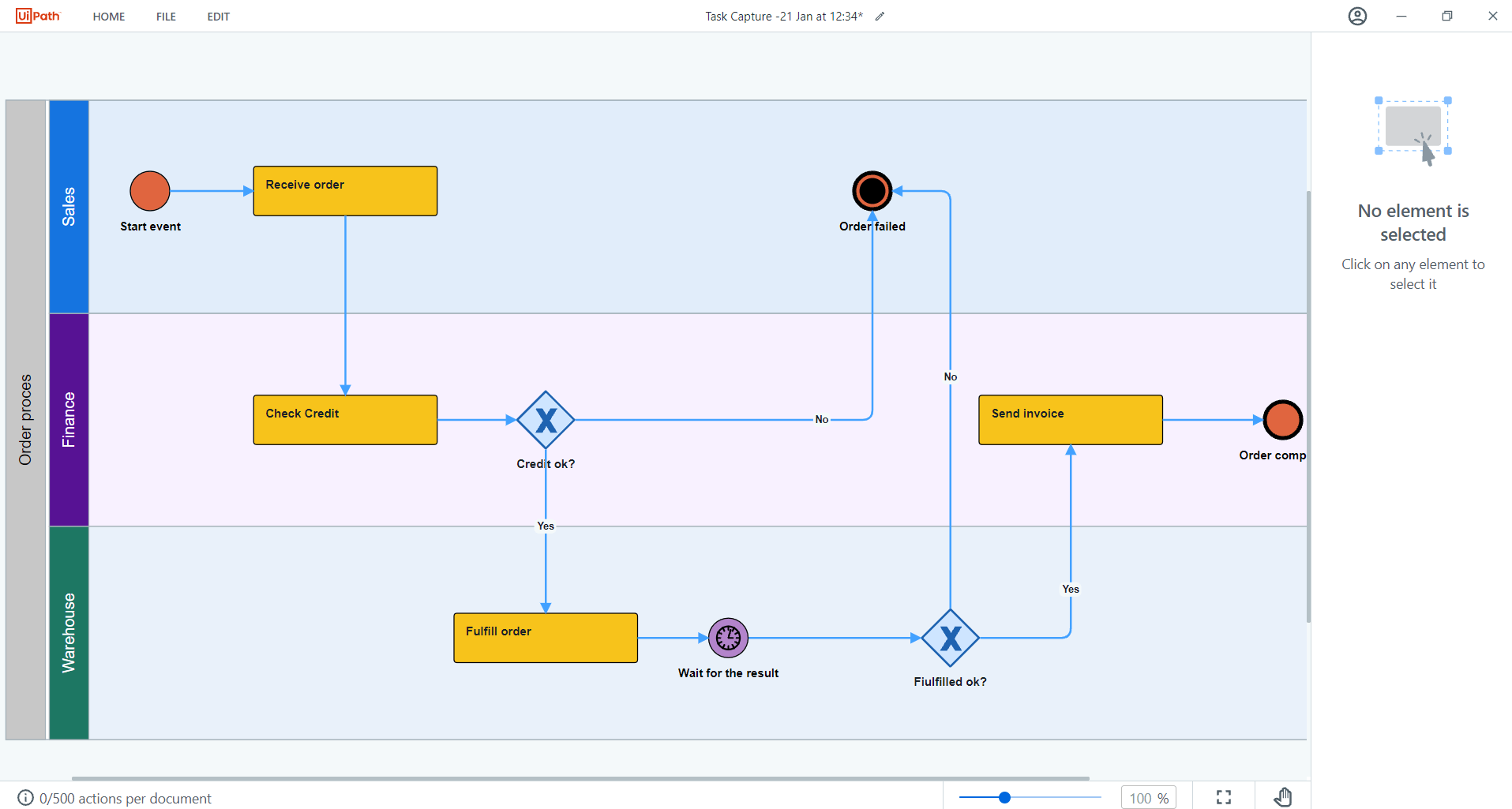
Download the 2022.1 Task Capture preview version to try out the new functionality.
UiPath Process Mining
Since UiPath Process Mining was launched on UiPath Automation Cloud™, the Process Mining team has been busy adding new functionality to the product. This month, the team added the Discovery Accelerator for Order-to-Cash (O2C). The Discovery Accelerator for O2C is a customizable template containing interactive dashboards, analysis, and key performance indicators (KPIs) focused on the O2C process. The template gives users a head start when it comes to visualizing, improving, and monitoring the O2C process end-to-end.
Users will also be able to send automation ideas surfaced during process analysis to a centralized automation pipeline in UiPath Automation Hub. Better yet, users will gain insight into critical KPIs including late delivery rate, automation rate, and cycle times.
New UI Automation activities
This month brings no fewer than 10 new UI Automation features to Studio that make robotic process automation (RPA) development and maintenance easier and more flexible. Some highlights:
-
A powerful new drag-and-drop activity that allows you to automate dropping an object (such as an image) onto a webpage area that accepts dropped content.
-
A modern activity runtime browser switcher that enables you to run automations designed for one browser (e.g. Internet Explorer, now out of support) in another browser with few or no selector modifications. This has been a frequently requested feature from our customers.
-
New support for SAP® automation includes new activities to expand and extract information from an ALV Hierarchical Table, and integration of SAP WinGUI activities with Object Repository, which allows use of those elements in workflows much more easily.
-
A new modern activity which lets you execute JavaScript code in a webpage from within an automation, with options to send parameters and output the script.
Don’t forget to check the release notes regularly for the comprehensive list of new Studio activities and capabilities, and links to detailed documentation.
IT Automation adds support for NetIQ e-Directory (cross-platform LDAP)
As we continue our endeavor to automate all the areas of the IT ecosystem, we have now added NetIQ e-Directory activities to our integrations portfolio. These background running activities enable you to connect to both e-Directory and Active Directory (AD) servers. This integration supports all the Studio project types for Windows—legacy, Windows, and cross-platform. This can run on all robot types, be it Windows, MacOS, Linux, or serverless.
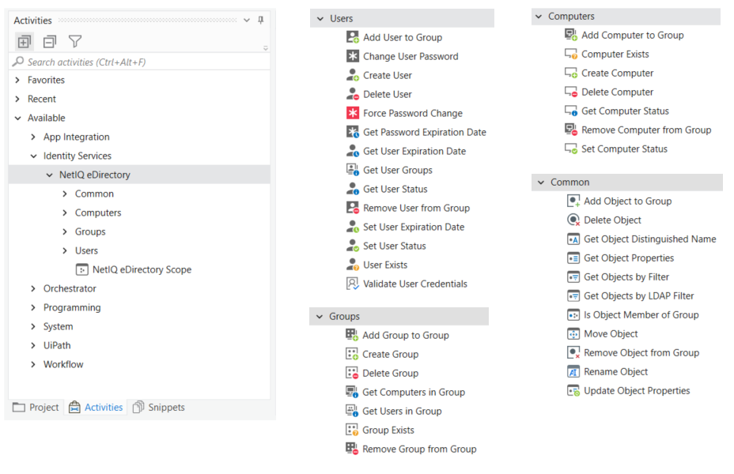
The NetIQ e-Directory activity pack has similar activities to the ones already available for AD. We have around 40 activities for e-Directory, helping automate scenarios such as employee onboarding, roles and membership management, access control, etc. for cross-platform projects. This was previewed last month and is now available on the UiPath official feed.
To learn more about how to use e-Directory activities or other IT automation activities to automate cloud or on-premises datacenter resource management, and provisioning, visit the IT integrations overview page.
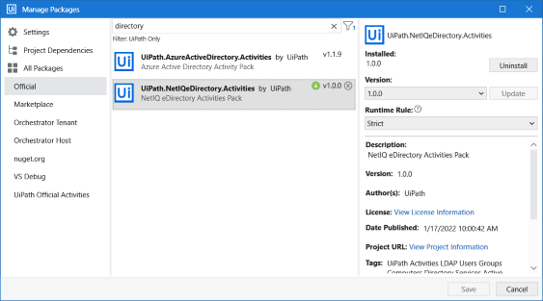
UiPath StudioX gets better
We’re continuing to add new features and simplifications to UiPath StudioX to maintain that great balance of simplicity and power for non-developers who want to build their own automations (also known as citizen developers).
In the latest release, we’ve added some activities previously only available in StudioX that make it easier to selectively take repetitive actions:
-
Else if
-
For each file in folder
-
For each folder in folder
We’ve also made some improvements to Data Manager, including the ability to configure a project notebook and making the properties of arguments visible by default.
And continuing with the UI Automation theme in Studio (above), we’ve enhanced (and simplified) the application cards in StudioX for Microsoft Word and Microsoft Outlook Desktop. They now allow UI Automation related to their referenced window, without the addition of a Use Application/Browser card. So that means you no longer need to “nest” cards—you can do all your UI Automation within the initial application card:
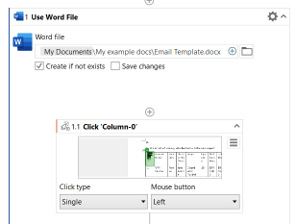
Document Understanding for everyone
A point-and-click artificial intelligence (AI) capability, Forms AI, is moving to Public Preview. Introduced in 2021.10 as part of UiPath Document Understanding, Forms AI enables an easy, low-touch approach to extracting data from forms and other types of documents that have similar formats. Even citizen developers with little or no familiarity with machine learning (ML), can easily use Forms AI to automatically generate lightweight models in just minutes:
-
Upload two to five document samples
-
Choose the fileds for extraction in one document
-
Test out the automatically generated model on other samples
-
Your model is ready to be used for Document Understanding automations
See how the process works step-by-step in the video below:
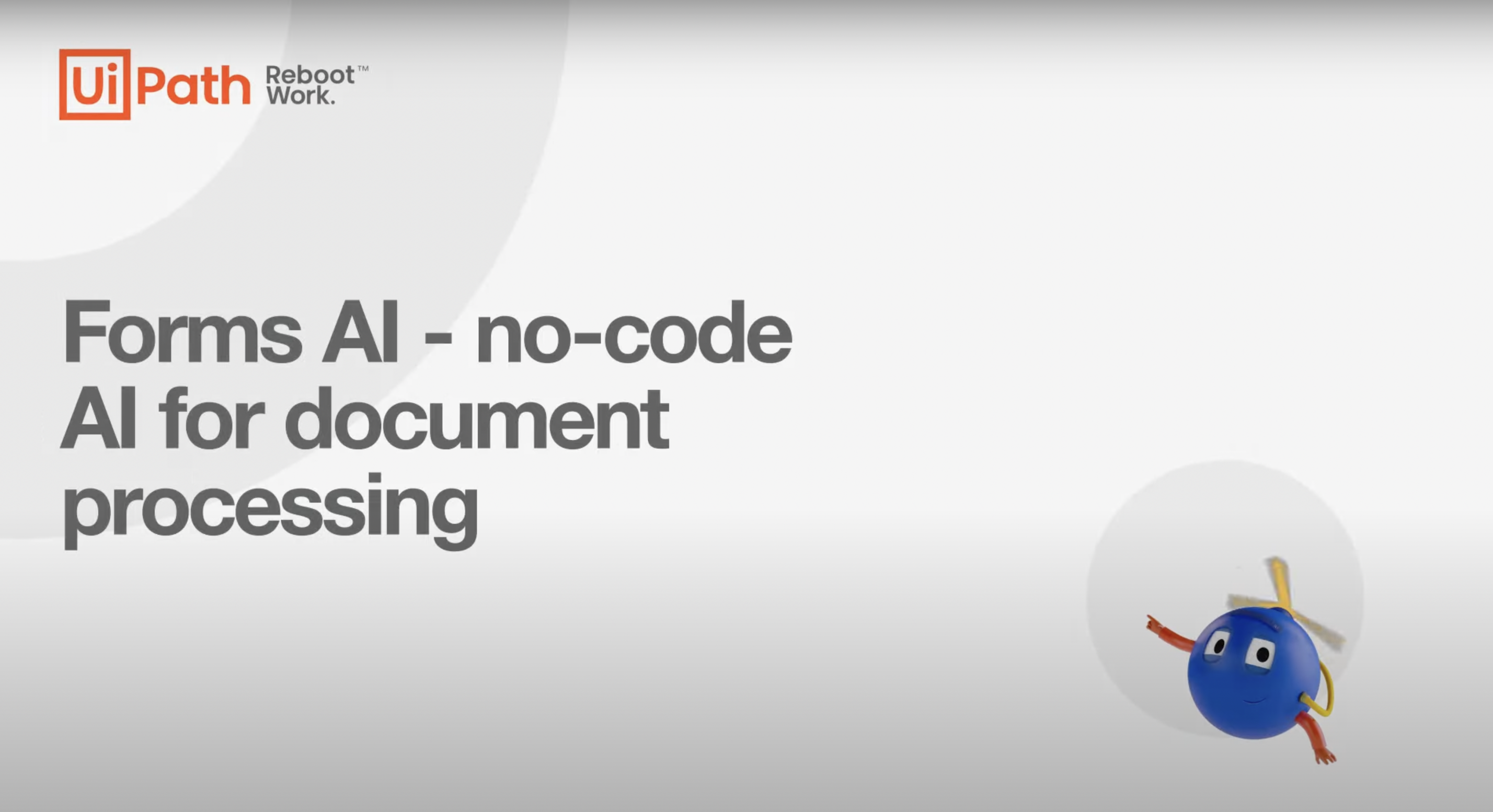
Automation Cloud™ Robots preview has arrived!
Recently, we announced the public preview of Automation Cloud Robots—a fully software as a service (SaaS) option for getting Unattended Robot capacity that runs in UiPath Automation Cloud Enterprise. With the Automation Cloud Robot option, everything is hosted by UiPath and delivered on demand—so you don’t need to provide any of your own infrastructure to manage or run Unattended Robots. Even better, all our Automation Cloud Enterprise customers can try it out for free during the public preview—we’ve already added a free preview license to each account.
Automation Cloud Robots are very flexible and designed for a wide range of situations. By default, an Automation Cloud Robot is a Windows virtual machine (VM) with the latest UiPath Unattended Robot installed that automatically spins up in Automation Cloud when UiPath Orchestrator detects that robot capacity is needed, and spins down when it’s not. But you can also remote into the VM and customize your own base image snapshots that include any additional software you need in the VMs. This can include VPN software and configurations to connect back to your network, and/or connecting the VM to your domain. Once you customize the machine, we can then create as much capacity as you need on-demand in Automation Cloud, using the image snapshot you choose.
Automation Cloud Robots add even more Unattended Robot options in Automation Cloud. Choosing Automation Cloud for enterprise means you can use whatever combination you need of on-premises robots, robots hosted by you in public clouds, or now SaaS robots hosted by UiPath. And you can manage and monitor them all from Automation Cloud Orchestrator! Whatever your policy and business needs are, we can deliver unattended robots configured to support them.
We’d love your feedback during the preview. More details are available in our UiPath Forum post.
Less than three months old—UiPath Integration Service expands its offering
UI improvements
Users will appreciate the refreshed, look and feel of the new UiPath Integration Service connector catalog.
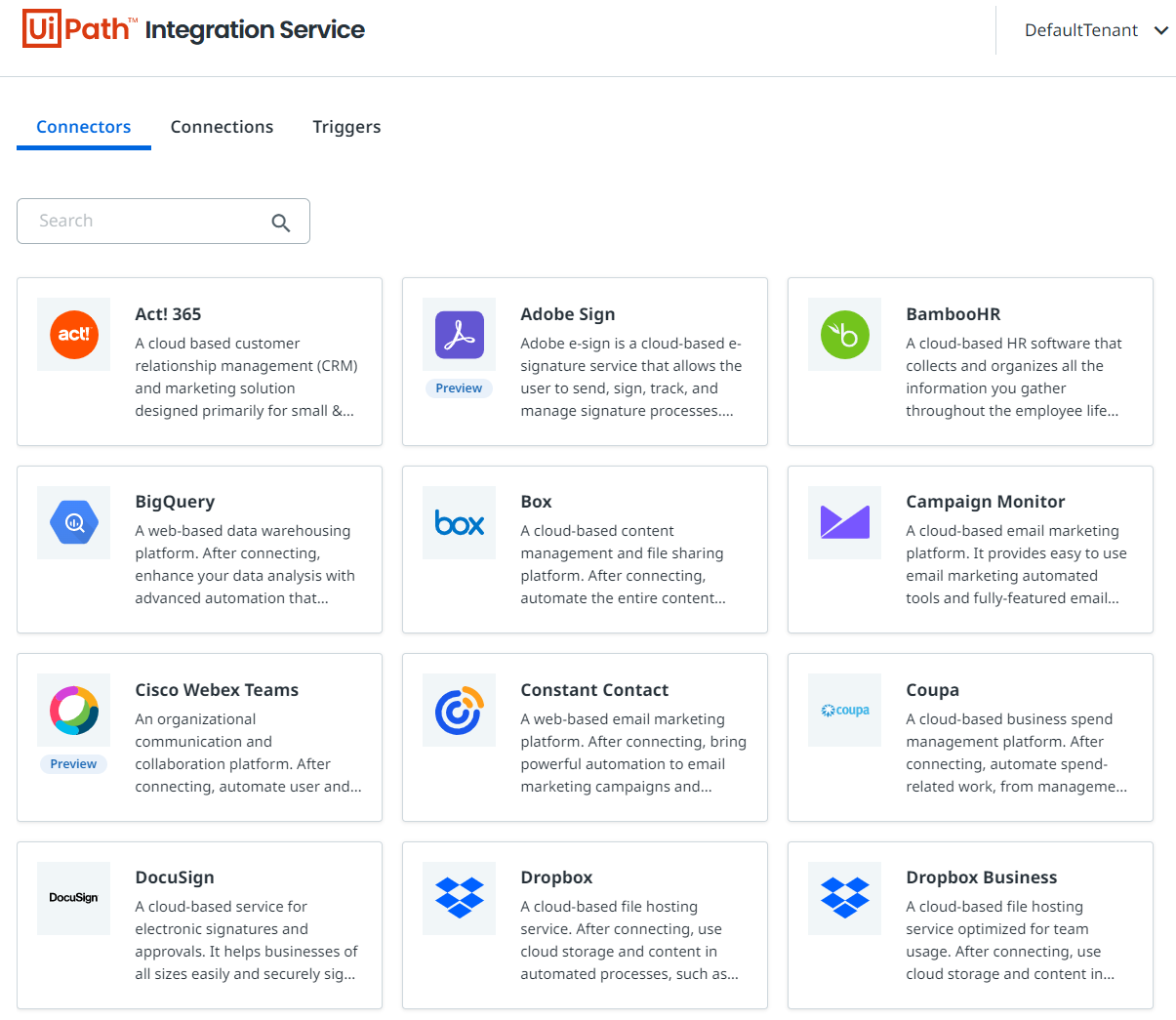
In addition to a more compact experience, users can now search across our rapidly growing list of connectors and receive early access to new integrations in preview.
Calling out CRM connectors
The current UI enhancements are certainly timely given the increasing volume and availability of new connectors. Look for upcoming line-of-business (LoB) connectors supporting enterprise resource planning (ERP), finance and ops, data analytics/business intelligence, human resources (HR)/talent management, marketing automation, advertising, productivity tools, project planning/workflow, and cloud storage.
However, let’s take this opportunity to specifically highlight the depth and breadth of our current available customer relationship management (CRM) connectors:
-
Act! 365
-
HubSpot CRM
-
Microsoft Dynamics 365 CRM
-
SAP Cloud for Customer
-
Salesforce
-
Sugar Enterprise
-
Sugar Professional
-
Sugar Sell
-
Sugar Serve
…with more to follow.
Rocking robots with updated triggers
Robots depend on triggers to activate the next step in an automated process. By automating workflows from application-to-application, triggers, for example, can help quickly drive a human resources (HR) onboarding process, a typical order-to-pay scenario, or even a complex, lead-to-cash workflow.
As of December, Integration Service introduced new trigger enhancements designed to improve user flexibility and trigger self-governance:
-
Monitoring/maintaining automation flow: a ‘failed connections’ icon helps quickly spot and resolve authentication issues
-
Historical insights into trigger activity: Integration Service provides an audit trail detailing your trigger history, including trigger attempts
-
Increased usability: both connections and triggers are now supported through custom-connection naming
Read our latest trigger-related blog post.
That’s it for this month. As always, we are looking forward to your feedback and thoughts on these capabilities. Keep the feedback coming through the Insider program.
[ad_2]
Source link


